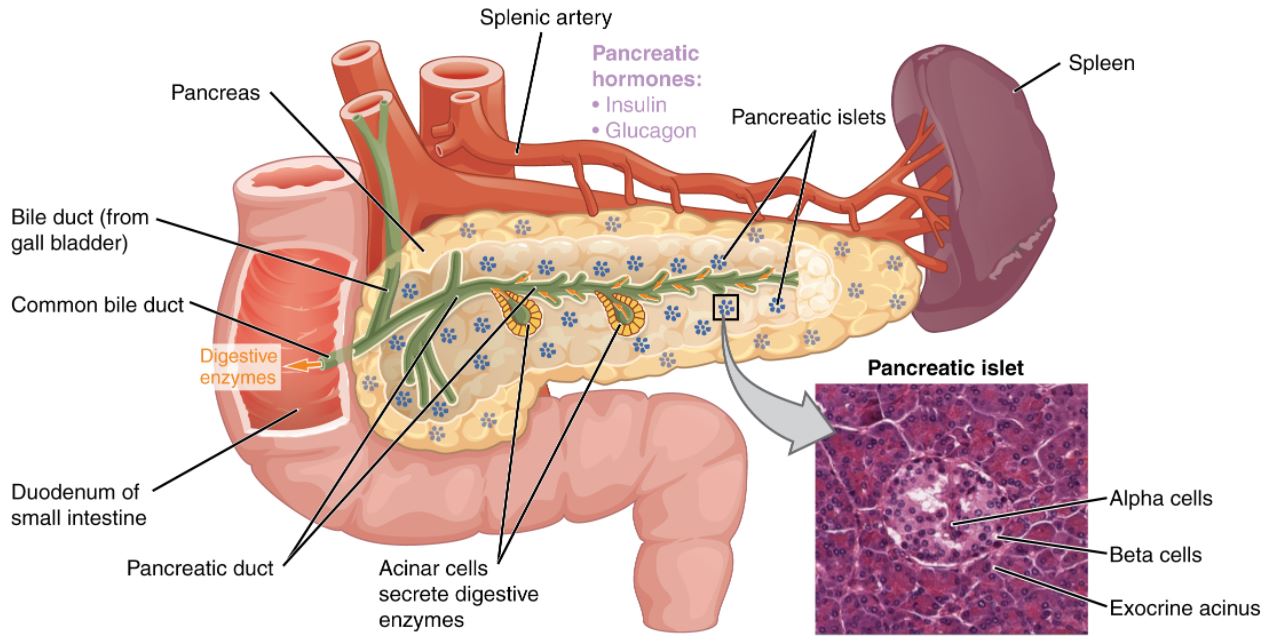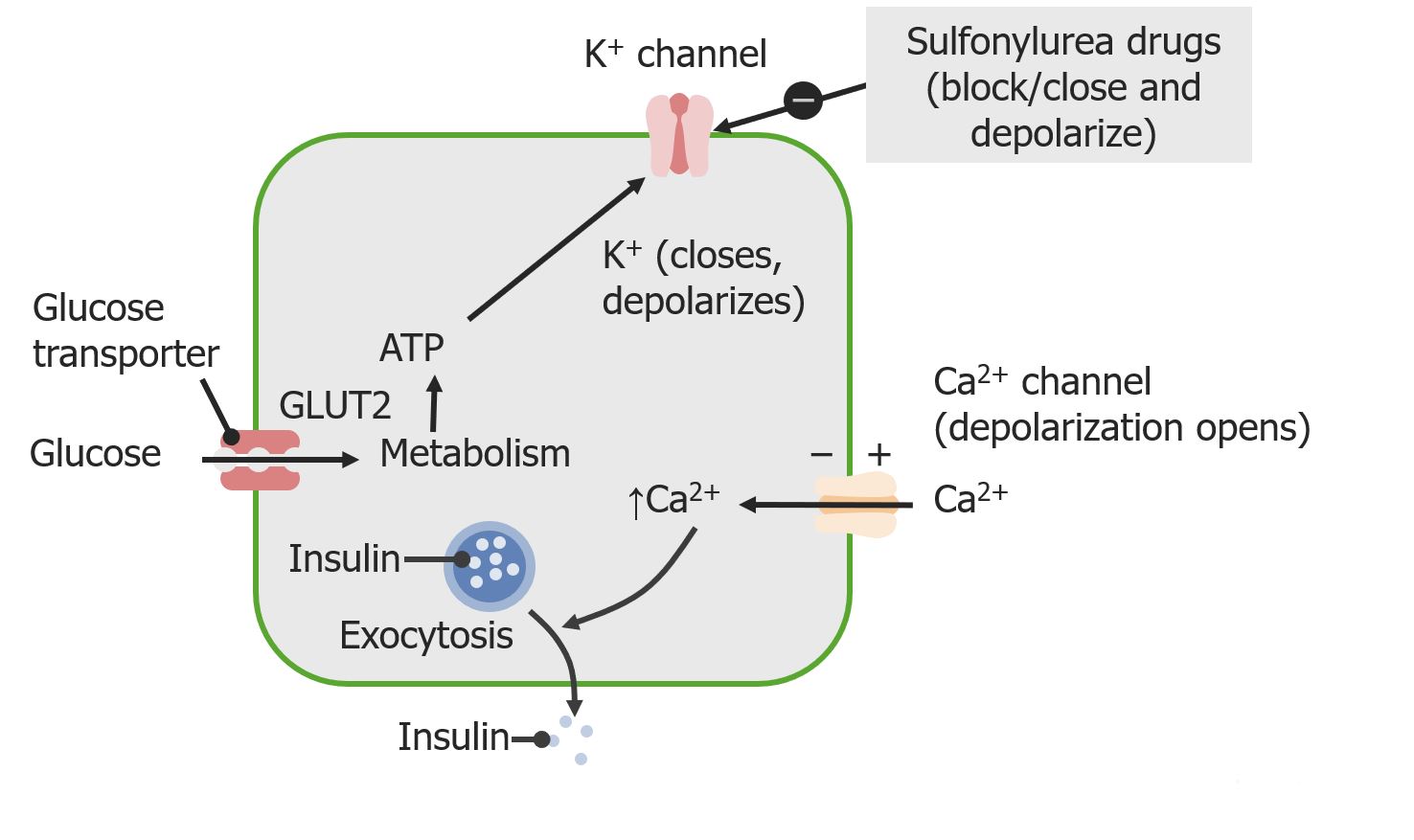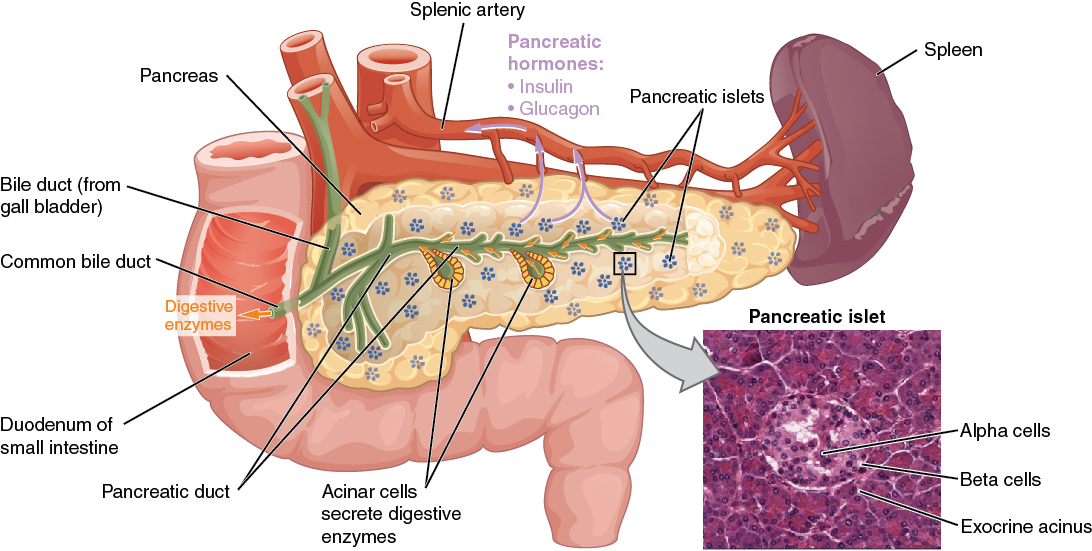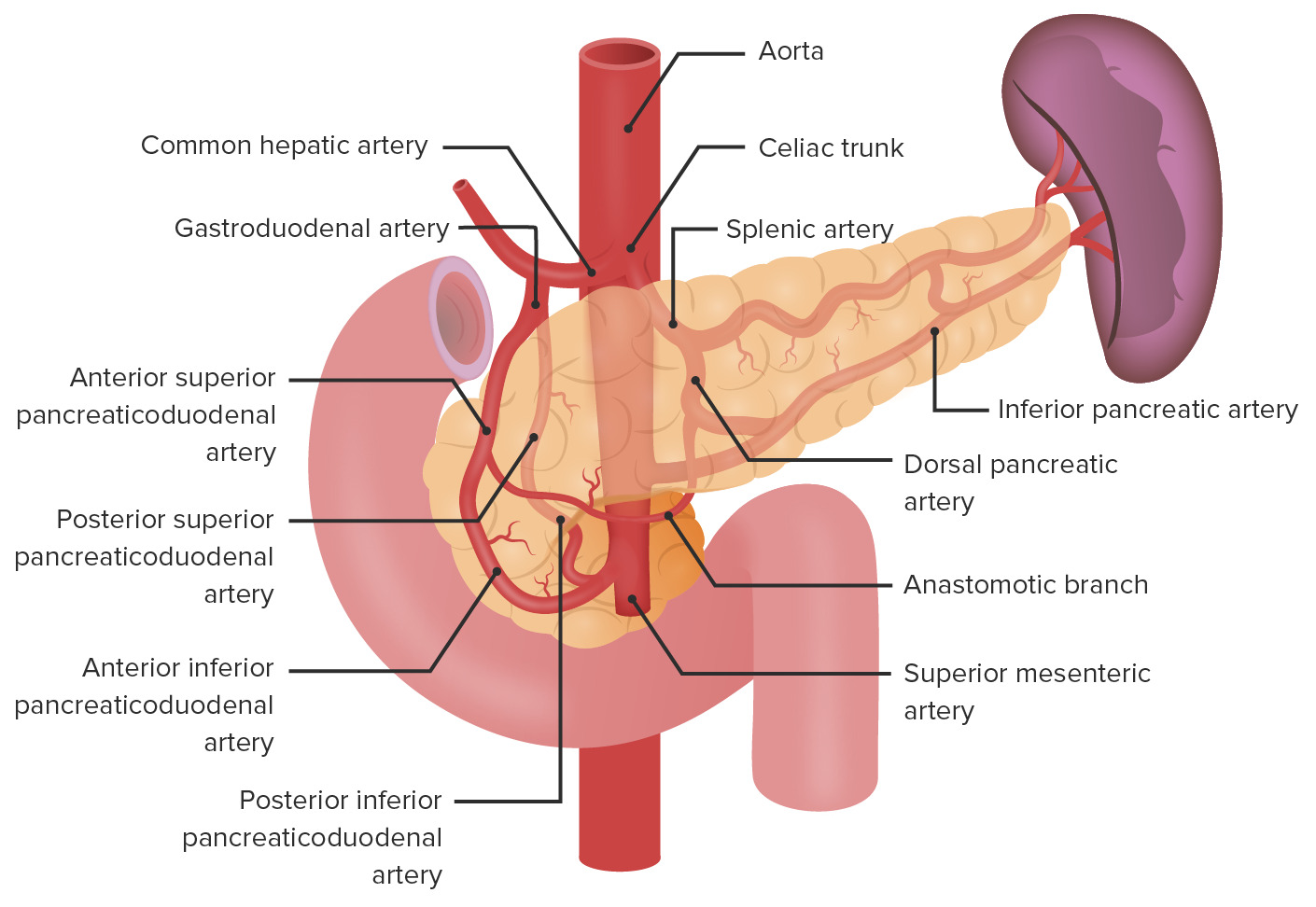Playlist
Show Playlist
Hide Playlist
Overview of Diabetes Mellitus – Hyperglycemia
-
Slides HyperglycemiaDiabetesMellitus EndocrinePathology.pdf
-
Download Lecture Overview
00:03 Welcome to the topic of diabetes mellitus. 00:05 This is the prototype of your endocrine pancreas and what may then go wrong with it. 00:11 Initially, we’ll go through in great detail the pathogenesis, we will describe in great detail type I and type II diabetes. 00:19 I’ll walk you through secondary diabetes, meaning to say that, well, was there something else going on with your patient such as haemochromatosis, maybe Cushing’s resulting in hyperglycemia. 00:31 I’ll walk you next into your complications and finally, a word or two about management of diabetes mellitus. 00:43 Welcome to hyperglycemia. 00:46 Diabetes mellitus itself is a chronic disease dealing with carbohydrates, fats and protein metabolism. 00:54 The fact that the balance of insulin and glucagon in fact has been lost. 01:01 Maybe there’s issue with a receptor causing or creating an environment of insulin resistance. 01:09 In any case, your patient with diabetes mellitus will always have hyperglycemia. 01:16 Therefore, you’ll do everything in your power to make sure that you’re able to prevent the glucose levels from rising to excessive levels. 01:25 Importantly, you are responsible to be able to diagnose your patient with hyperglycemia. 01:34 In order for the diagnosis of diabetes mellitus to be made, you need at least one of the following criteria. 01:41 First, fasting glucose equal to or greater than 126 mg/dl. 01:47 Fasting means that the patient should not have receive any food for at least eight hours. 01:53 Secondly, plasma glucose level of at least 200 mg/dl after an oral glucose tolerance test. 02:00 During this test, the patient has to ingest 75 grams of glucose dissolved in water, and his plasma glucose is measured two hours after that, of value of equal to or greater than 200 is indicative of diabetes. 02:14 Third, a level of glycosylated hemoglobin of at least 6.5%, and finally, a random plasma glucose of at least 200 mg/dl, in a patient with classic symptoms of hyperglycemia. 02:30 It is important to mention that if the patient does not present with symptomatology indicative of hyperglycemia, for example, polyuria, polyphagia, polydipsia, and fulfills anyone of the criteria that we just discussed, a second measurement of the same or different test is necessary in order to make the diagnosis. 02:50 Now, let's move on to pre-diabetes. 02:53 A patient is considered to have pre-diabetes if they have high glucose levels but they do not fulfill the criteria in order for the diagnosis of diabetes to be made. 03:02 In order for a patient to be considered pre-diabetic they must fulfill at least one of the following criteria, as you can see in the slide. 03:10 A patient is considered to have impaired fasting glucose if their levels of fasting plasma glucose are between 100-125 mg/dl. 03:21 Remember, normal levels of fasting plasma glucose are below 100, and levels above 125 are indicative of diabetes. 03:30 In between values are characteristic of impaired fasting glucose. 03:34 A patient is considered to have impaired glucose tolerance if two hours after ingestion of 75 grams of glucose their plasma glucose levels are between 140-199 mg/dl. 03:48 Normal people should have a levels below 140, whereas diabetics have above 200. 03:55 If patients have between 140-199, they have impaired glucose tolerance. 04:01 Patients are also considered to have pre-diabetes if their glycosylated hemoglobin is between 5.7-6.4%. 04:10 Patients with pre-diabetes have increase cardiovascular risks, and increase risk for developing diabetes mellitus. 04:18 As you can understand the risk is greater with greater values of glucose or glycosylated hemoglobin. 04:27 All these are very important factors and criteria that you’re paying attention to when you’re dealing with a patient pre-diabetic. 04:35 And in the United States, metabolic syndrome X or metabolic X syndrome is an epidemic, isn’t it? Obesity is an epidemic and when we talk about metabolic syndrome, you’re talking about an obese individual probably, probably suffering from hyperglycemia and most likely pre-diabetic, in fact, probably diabetic.
About the Lecture
The lecture Overview of Diabetes Mellitus – Hyperglycemia by Carlo Raj, MD is from the course Pancreatic Disease and Diabetes.
Included Quiz Questions
What is a characteristic of diabetes mellitus?
- Glucosuria
- Increased cortisol
- Hypercalcemia
- Uremia
- No change in fat deposition
What is a diagnostic criterion for diabetes mellitus?
- Hemoglobin A1c ≥ 6.5%
- Polyuria, polydipsia, and polyphagia with random glucose > 100 mg/dL
- Plasma glucose > 125 mg/dL 24 hours after an oral glucose load
- Fasting glucose > 110 mg/dL on two separate occasions
- Random glucose > 200 mg/dL in an asymptomatic patient
Which lab value would suggest that a patient has pre-diabetes?
- Fasting glucose of 110 mg/dL
- Fasting glucose of 90 mg/dL
- Plasma glucose of 125 mg/dL 2 hours after glucose load
- Fasting glucose of 60 mg/dL
- Plasma glucose of 100 mg/dL 2 hours after glucose load
Customer reviews
5,0 of 5 stars
| 5 Stars |
|
5 |
| 4 Stars |
|
0 |
| 3 Stars |
|
0 |
| 2 Stars |
|
0 |
| 1 Star |
|
0 |









